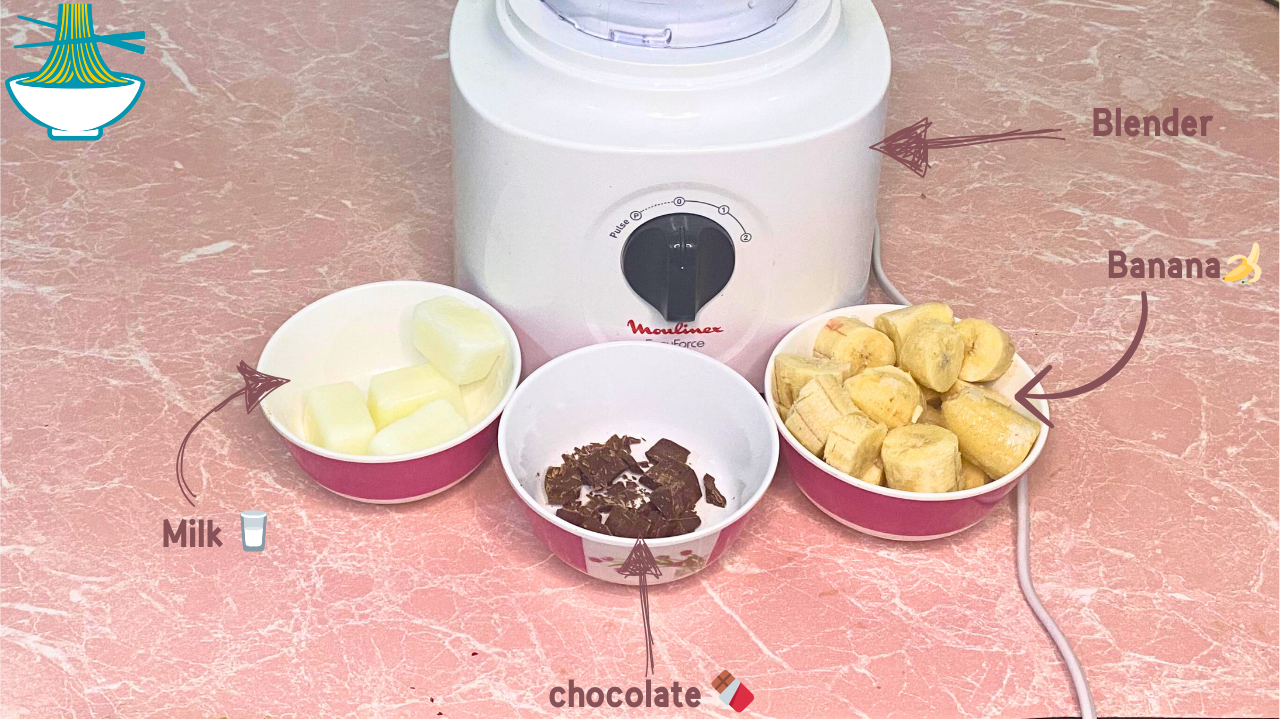This is a recipe for a creamy and delicious milkshake that you can easily prepare at home. Milkshake is a great dessert option at any time of the year. You can customize the ingredients and additions according to your personal taste.
Milkshake is known for its delicious and appetizing flavor, making it suitable for breakfast or as a light meal during the day. You can prepare it quickly and easily using simple ingredients such as milk, ice, fruits, and sugar.
Milkshake offers a delightful and addictive experience, and you can experiment with different flavors and additions to enhance the taste and texture of the recipe. Try adding frozen fruits like strawberries, mangoes, chocolate, or vanilla for a unique and delicious experience.
Due to its simplicity and the variety of flavors that can be tried, milkshake is a fantastic addition to your dessert menu. Enjoy preparing and consuming it with family and friends, savoring its wonderful and refreshing taste at any time and place.
To watch the cooking video, click on the link: Ultimate Guide to Chocolate Milkshake Recipe

Ingredients:
- Milk ice cubes
- Frozen banana
- 100 grams chocolate cubes
- 1 tablespoon cocoa
- Sugar (as desired)
- 1 cup milk

Preparation Method:
1. Prepare milk ice cubes by pouring milk into an ice tray and freezing it until solid.
2. Place milk ice cubes in a blender.
3. Add frozen banana and 100 grams of chocolate cubes to the blender.
4. Add 1 tablespoon of cocoa and sugar according to taste.
5. Pour 1 cup of milk into the blender.
6. Blend the ingredients until smooth and homogeneous.
7. Serve the milkshake in serving cups and garnish as desired.
In conclusion, a milkshake represents more than just a delightful treat; it embodies moments of joy shared with loved ones, evoking nostalgic memories and creating new ones. Its versatility allows for endless creativity in flavor combinations, making each sip a unique experience. Whether enjoyed on a sunny afternoon or as a comforting indulgence after a long day, a milkshake is not just a beverage but a symbol of simple pleasures and cherished moments. So, whip up your favorite blend, raise a glass, and savor the blissful taste of a perfectly crafted milkshake, making every moment special.
Nutrition Value
1. Milk Ice Cubes:
- Calories: Approximately 8 calories per ice cube (depending on size)
- Carbohydrates: Negligible
- Protein: Negligible
- Fat: Negligible
- Sodium: Negligible
- Cholesterol: Negligible
- Vitamins and Minerals: May contain trace amounts of calcium and other minerals from milk.
2. Frozen Banana (medium size, approximately 118 grams):
- Calories: About 105 calories
- Carbohydrates: Approximately 27 grams
- Protein: About 1.3 grams
- Fat: Less than 0.5 grams
- Sodium: 1 milligram
- Cholesterol: 0 milligrams
- Vitamins and Minerals: Rich in potassium, vitamin C, vitamin B6, and dietary fiber.
3. 100 grams Chocolate Cubes:
- Calories: Varies depending on the type of chocolate (dark, milk, white)
- Carbohydrates: Varies
- Protein: Varies
- Fat: Varies
- Sodium: Varies
- Cholesterol: Varies
- Vitamins and Minerals: May contain small amounts of iron and magnesium, depending on the chocolate type.
4. 1 Tablespoon Cocoa Powder:
- Calories: About 12 calories
- Carbohydrates: Approximately 3 grams
- Protein: About 1 gram
- Fat: Less than 1 gram
- Sodium: 1 milligram
- Cholesterol: 0 milligrams
- Vitamins and Minerals: Contains iron, magnesium, and antioxidants.
5. Sugar (as desired):
- Calories: Varies depending on the amount used
- Carbohydrates: Varies
- Protein: 0 grams
- Fat: 0 grams
- Sodium: 0 milligrams
- Cholesterol: 0 milligrams
- Vitamins and Minerals: No significant vitamins or minerals, provides quick energy but should be consumed in moderation.
6. 1 Cup Milk (whole milk, approximately 244 grams):
- Calories: About 146 calories
- Carbohydrates: Approximately 11.7 grams
- Protein: About 7.7 grams
- Fat: About 7.9 grams
- Sodium: 98 milligrams
- Cholesterol: 24 milligrams
- Vitamins and Minerals: Rich in calcium, vitamin D, vitamin B12, potassium, and phosphorus.
The nutritional benefits vary for each ingredient, but they collectively contribute to a balanced diet when consumed in moderation.


Comments